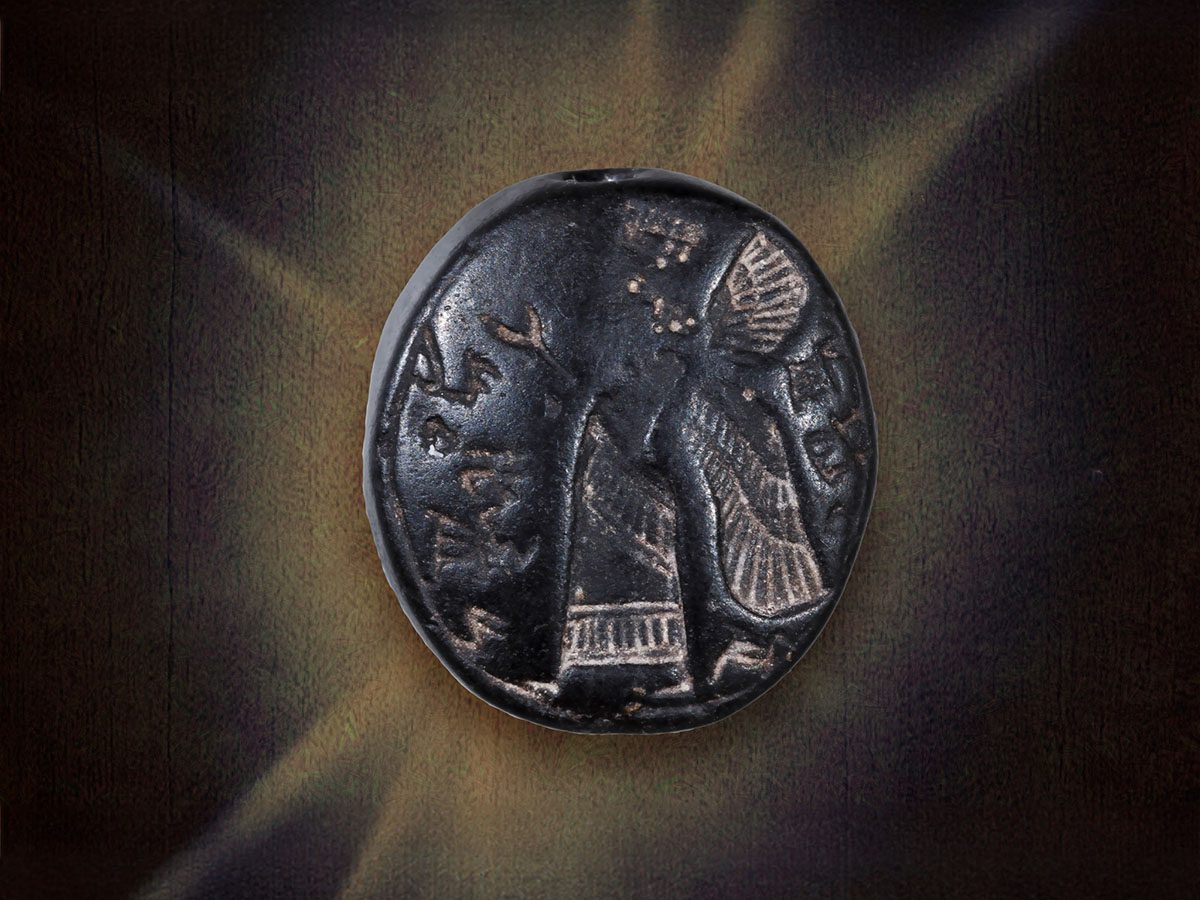
Archaeologists from the Israel Antiquities Authority (IAA) have announced the discovery of an ancient and rare 2,700-year-old seal found near the southern wall of the Temple Mount in Jerusalem. The seal is made of black stone, with the inscription “Le Yehoʼezer ben Hoshʼayahu,” or “For Yeho’ezer son of Hosh’ayahu.” The inscription is written backwards so that the seal could be used to press the words into wax. It also contains a hole drilled through the length of it, indicating it was also used as an amulet by its wearer. Archaeologists estimate that the two men referenced on the seal could have lived anywhere from the 10th to the 6th centuries BC.
“The seal, made of black stone, is one of the most beautiful ever discovered in excavations in ancient Jerusalem, and is executed at the highest artistic level,” stated Dr. Yuval Baruch and Navot Rom, IAA excavation directors. The seal also includes an image of a winged profile of a man, possibly a king according to the IAA, with an arm raised and open palm. IAA archaeologist and Assyriologist, Dr. Filip Vukosavović, called it “an extremely rare and unusual discovery.” “This is the first time that a winged ‘genie’ – a protective magical figure – has been found in Israeli and regional archaeology. Figures of winged demons are known in the Neo-Assyrian art of the 9th-7th Centuries BCE, and they were considered a kind of protective demon,” said Vukosavović. The archaeologists believe that due to the “sloppy manner” of the script, the seal originally only contained the image of the winged demon, with the script of names being added later. “It is not impossible that perhaps it was Yehoʼezer himself who engraved the names on the object,” said Dr. Ronny Reich of the University of Haifa.
Dr. Yuval Baruch, excavation director and Deputy Director of Archaeology at the IAA, stated the find also indicated that literacy was more widespread throughout ancient Jerusalem than originally thought. “Contrary to what may be commonly thought, it seems that literacy in this period was not the realm only of society’s elite. People knew how to read and write – at least at the basic level, for the needs of commerce. We know of many written seal impressions, in paleo-Hebrew script, from the environs of the City of David and the Kingdom of Judah,” wrote Dr. Baruch. The name “Yehoʼezer” is mentioned in an abbreviated form, “Yoʼezer,” in reference to one of King David’s fighters in 1 Chronicles 12:7.
Researchers noted that the influence of the Assyrian style on the winged demon shows how the Assyrian culture had incorporated itself onto the Hebrew culture after the Assyrian Empire had conquered the region. However, there are indications on the seal that the Hebrews still held on to their own cultural identity. “Yet within that feeling, this Yehoʼezer also held firmly onto his local identity, and thus his name is written in Hebrew script, and his name is a Hebrew name, which belongs to Judah’s culture,” said Dr. Baruch. More information on the seal will be shared on September 4 at the “City of David Research Conference.”


